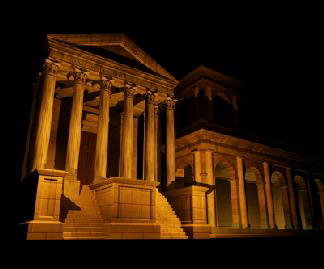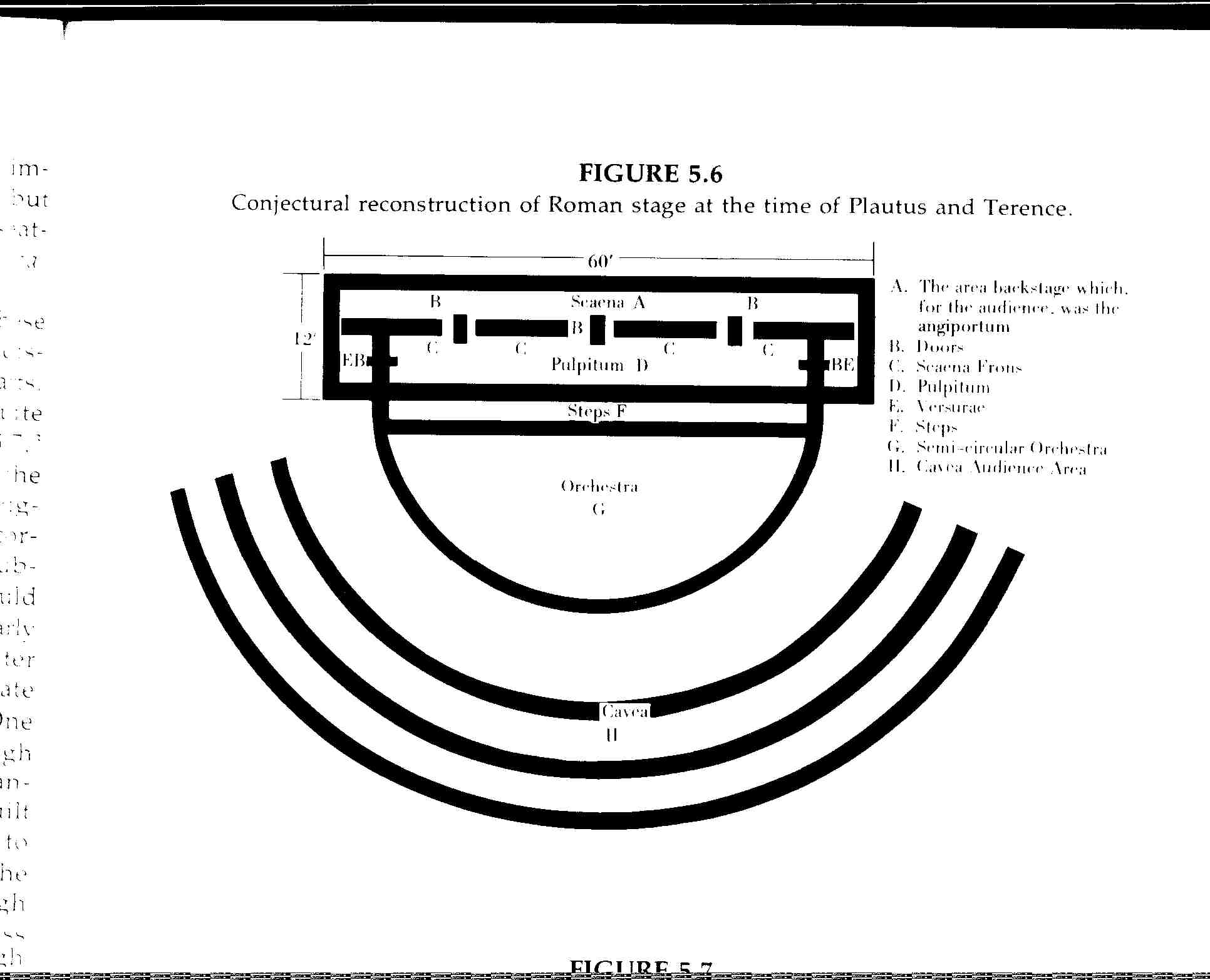Influences on Roman Theatre
Various Sites of Theatres (with pictures)
Layout and Design of Roman Theatres
There were three major influences on the Ancient Romans' perspective of theatre, the Greeks, Etruscans, and the Oscans. The two major influences were the Greeks and the Etruscans.
The Oscans had a type of comedy called Atellan Farce. This was a type of improvised comedy played with stock characters (player types that repeated from play to play). There were typically four stock characters, Maccus (a boastful buffoon, a fool), Bucco (a fool and stupid guzzler), Pappus (a foolish old man), Dassenus (a hunchback, wise fool, others thought he was like Mandacus), and Mandacus (a monster with big jaws). These stock characters were the idea for the typical Roman play's stock character.
back to top | Sites | Layout | Influences |
Major Sites of Roman Theatres
The major locations for theatres tened to be around
temples so various gods could look at certain plays that were
either for them or about them. Later on however, theatres
began to be built on hillsides (hill provided extra support and
is easier to build on). All over the Roman Empire theatres were erected to entertain
the masses.
back to top | Sites | Layout | Influences |
The Roman theatre was laid out similar to that of the
Greek theatre. There was a backstage area, seating
arangements for the audience, and an orchastra. The Roman
stage went through many different stages before reaching
the form we all recognize today.
Theatres started out as simple, temporary wooden
structures. The layout of the stage was the same as in
later stone stages-3 doors each opening to the brothel, temple,
and hero's house. The stage itself was inclosed by wings
at each side and the scene house had a roof.
The Romans didn't have a permanent (stone) theatre until
the final years of the Republic, the latest reference to
the Romans building a new theater was in 17 b.c. The
large stone theatres seated tens of thousands of Romans.
There wasn't a front curtain nor were there performances
done in the orchastra pit (unlike Greek plays). The
patrons to the plays sat on temporary wooden benches
where there was room, ushers would direct the patrons
all through out the performance.
Since the plays were staged outside, the characters
heard only what they needed to hear. If someone was
eavesdropping, they would stand near the speaking
characters and the speaking characters just wouldn't see
them. "If a developing plan needed interuption, the
characters conviently heard a door squeak announcing
arrival of interloper" (Gillespie, 116).
back to top | Sites | Layout | Influences |
Layout and Design of Roman Theatres Most plays were comedies and few information is known
about tragedies except that instead of having three
doors on stage, there would only be one (the temple).
The plays were all basically identical: they all
contained some sort of mistaken idendity, three doors,
and stock characters (actors wore masks). The doors would lead to the
brothel (stage right), temple (center stage), and the
hero's (young man) house (stage left). It's never shown
Most plays were comedies and few information is known
about tragedies except that instead of having three
doors on stage, there would only be one (the temple).
The plays were all basically identical: they all
contained some sort of mistaken idendity, three doors,
and stock characters (actors wore masks). The doors would lead to the
brothel (stage right), temple (center stage), and the
hero's (young man) house (stage left). It's never shown
 what happens in the doors, hinted at however.
If a character were to enter or exit by stage left
they would be going to or coming from the harbor; if
they entered or exited from stage right they would be
exiting to or entering from the town.
what happens in the doors, hinted at however.
If a character were to enter or exit by stage left
they would be going to or coming from the harbor; if
they entered or exited from stage right they would be
exiting to or entering from the town.
|
Home |
Introduction |
History |
Plays |
Bibliography |